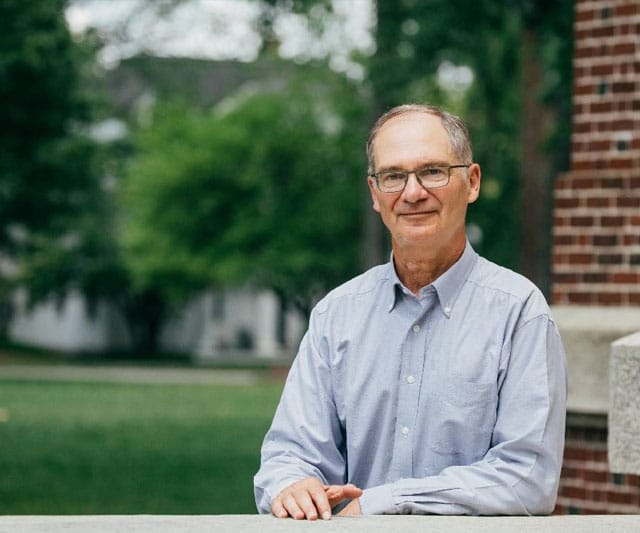Swelling ranks of retirees have long compelled policymakers to ask two critical questions: Are workers saving enough to retire? And can the government afford to provide them with adequate health care?
Jonathan Skinner, a 2022 Next Avenue Influencer in Aging, has led efforts to answer those questions in his roles as a distinguished professor at Dartmouth College and director of the Economics of Aging Program at the National Bureau of Economic Research. The NBER program studies of the health and financial well-being of people as they age and examines the policy implications of an aging population.
“A lot of people arrive at retirement not really having a good sense for how they’re going to support themselves”
Skinner has stepped down as an economics professor but remains a research professor in that department and is a professor in the Geisel School of Medicine at Dartmouth, which houses comprehensive datasets on Medicare and Medicaid that enable him to find efficiencies in the country’s health care system.
His work in that field led to the economist’s election to the National Academy of Medicine in 2007; in 2021, he won the Victor Fuchs Award for Lifetime Contributions to the Field of Health Economics from the American Society of Health Economists.
The danger of retiring unprepared
He cautioned that some people approaching retirement age — not all or even most of them, but a large minority — may be in for an unpleasant surprise if they stop working too soon.
“A lot of people arrive at retirement kind of not really having a good sense for either how they’re going to support themselves or how to move into a sustainable level of spending,” Skinner said. “Not everybody, obviously, but certainly a significant fraction of people get to retirement and then think, ‘Gosh, I wasn’t expecting this.'”
By “this,” he meant the end of a regular paycheck. Skinner, 67, gained first-hand knowledge of that when he left Dartmouth’s economics department. “Having just gone through the process of suddenly having your income stop,” he said, “I know it’s hard to envision your finances in a world where you no longer get a check every month or every other week.”
He has also learned how tricky defined-contribution retirement-savings plans can be. After his father-in-law died, Skinner and his wife asked to transfer $40,000 from the older man’s retirement savings to a different account. One institution confirmed it had sent the money, but the other never acknowledged receiving it.
“I have a PhD and I’m struggling with this.”
“If I hadn’t checked and said, ‘Well, wait a minute, we’re missing money here,’ that money just would have disappeared,” Skinner said. Two weeks after raising the issue, he was still waiting to hear where the money was.
“I have a PhD and I’m struggling with this,” he said. “When you have older people, whose kids are not engaged or not talking to them, you wonder how much money disappears.”
One healthcare gap narrows, another widens
Skinner, is more sanguine about health care. He said that recent research on heart attack treatments suggested racial disparity in health care for older adults is narrowing, and the gap between the quality of care received by Black and white patients decreased by more than two-thirds over the past two decades.
At the same time, another study found that geographic disparity has grown. State-by-state difference in death rates among midlife Americans increased by about 70% between 1992 and 2016. Skinner said the change was attributable to some states choosing to spend public funds to improve health care while others raised spending — and improved care — little.
“The example we use is Ohio and California,” he said. “In 1990, they were almost identical with regard to midlife mortality. By 2016, California was among the best and Ohio was in the back of the pack. It wasn’t that Ohio got that much worse; it actually got a little better. But California improved dramatically.”
Skinner said public health measures adopted by each state might explain the difference. “I can’t prove this,” he said, “but California taxed cigarettes a lot and really worked to reduce air pollution, expand Medicaid and do a lot of other things to improve public health and they paid off, while Ohio did not.”
The benefit of Obamacare
He said the data does suggest that growth in Medicare spending slowed as access to health care expanded. That was a surprising development in a long battle to rein in medical costs.
“In part because of ACA (the Affordable Care Act, or ‘Obamacare’) cuts to reimbursement rates, Medicare spending increases have been relatively modest despite the fact that it keeps enrolling all of these new baby boomers,” he said.
The data does suggest that growth in Medicare spending slowed as access to health care expanded.
Data suggest that fewer surgeries may also help to slow increases in Medicare spending. “A surprising number of surgical procedures are declining in the Medicare population because doctors are gradually realizing the side effects may not be worth any benefit,” Skinner said.
This echoes back to the introduction of innovative technologies like stem cell therapies and robotic surgery. Economists were dubious of the cost-savings claims and the life-extending, pain-reducing promises that accompanied these innovations.
“When I started to look at the data, I just didn’t see it,” Skinner said.
Difficult policy decisions ahead
He is not a techno-skeptic, however. The professor said he is hopeful about the potential of artificial intelligence, the promise of anti-Alzheimer’s drugs and intrigued by far-out ideas like robotic exoskeletons for people recovering from physical trauma.
But he also is a realist who is familiar with the business end of health care. “They could be revolutionary,” he said of the advanced technologies, “but they’re going to be expensive.”
If forced to choose, he might opt to devote resources to financial security in retirement.
“I think a strong Social Security program is really important,” he said. “Social Security has been a huge reason why the elderly poverty rate is now below the poverty rate for middle income working families.”
©Next Avenue. This article was first published on nextavenue.org.







